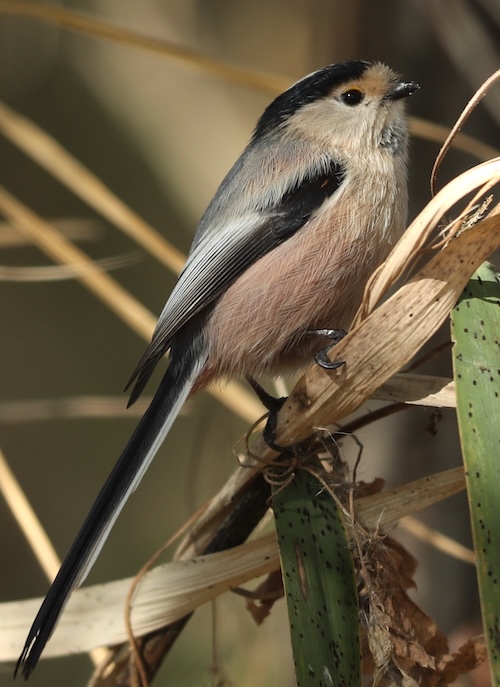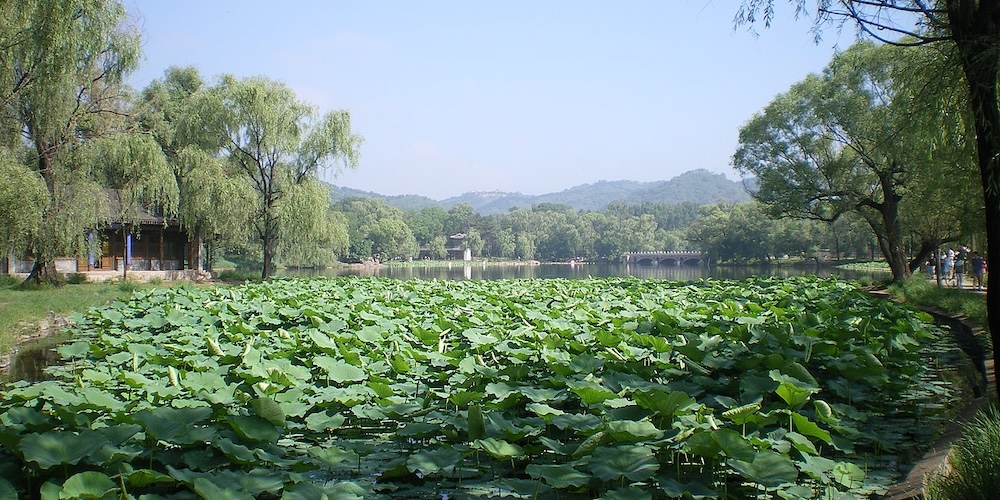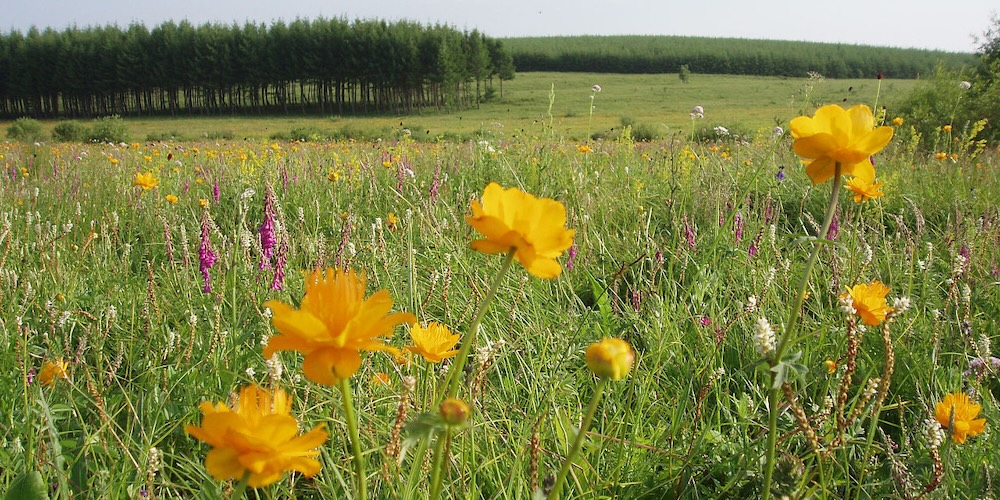Hebei Province

Hebei is a province in North China. It is China’s sixth-most populous province, with a population of over 75 million people. Shijiazhuang is the capital city with a population of more than 4.5 million people. The name Hebei means ‘north of the (Yellow) River’. The province covers 188,800 km2 (72,900 square miles) and borders Shanxi to the west, Henan to the south, Shandong and Liaoning to the east, and Inner Mongolia to the north; in addition, Hebei entirely surrounds the direct-administered municipalities of Beijing and Tianjin on land. Hebei’s economy is based on agriculture and manufacturing; it is China’s premier steel producer, which has contributed to serious air pollution.
Hebei is the only province in China to contain plateaus, mountains, hills, shorelines, plains, and lakes. Most of central and southern Hebei lies within the North China Plain. Western Hebei rises into the Taihang Mountains (Taihang Shan), while the Yan Mountains (Yan Shan) runs through northern Hebei. Beyond the mountains are the grasslands of Inner Mongolia. The highest peak is Mount Xiaowutai in Yu County in the northwest of the province, with an altitude of 9,455 feet. The Great Wall of China cuts through northern Hebei from east to west as well, briefly entering the border of Beijing Municipality, and terminates at the seacoast of Shanhaiguan in northeastern Hebei.

Great Wall of China, Jinshanling section – ©Luka Peternel CC BY-SA 4.0 via Wikimedia Commons
Hebei borders the Bohai Sea on the east. The Hai River watershed covers most of the province’s central and southern parts; the Luan River watershed covers the northeast. Excluding manmade reservoirs, the largest lake in Hebei is Baiyangdian, located in Anxin County, Baoding. Major cities include: Shijiazhuang, Baoding, Tangshan, Qinhuangdao, Handan, and Zhangjiakou.

Chengde Mountain Resort – ©takwing.kwong CC BY-SA 2.0 via Wikimedia Commons
Hebei has a monsoon-influenced humid continental climate. Its winters are cold and dry, while its summers are hot and humid. Temperatures average −16 to −3 °C in January and 20 to 27 °C in July. The annual precipitation ranges from 16 to 31 inches, concentrated heavily in summer.
Birding Hebei
While it is a small and populous province, the varied landscape does mean a varied bird life with more than 560 species recorded. It is also on a major migration route with a sea coast and, mostly recently established nature reserves.

Bashang Meadows, Fengning County – ©Whereisthetruthicantfindyou CC BY-SA 4.0 via Wikimedia Commons
Beidaihe is a famous coastal resort in China, it lies to the west of Qinhuangdao city and faces Bohai Bay. The suitable climate, 70% forest coverage, and long rugged coastline have contributed to rich biodiversity of Beidaihe. It is one of the best sites for observing migratory birds in far east and has recorded 410 bird species of which 64 species are under threat. The best birding time in Beidaihe is March to May and September to November. It is rivalled by Nanpu wetlands, another migrant trap. Also facing the bay, Shiji Island (Happy Island) is a nature reserve with great birding opportunities too, especially its extensive mudflats.

Saihanba National Park – ©Taken by Fanghong CC BY-SA 3.0 via Wikimedia Commons
Saihanba Nature Reserve is at a transitional point between forest and grassland attracting well over 200 bird species. Hengshui Hu, lying on the North China Plain, is a national nature reserve also well worth visiting as it has a complete wetland ecosystem incorporating swampland, open water, tidal flats, meadow and forest. Wuling Shan is the highest peak in the Yanshan Mountains, and it has a temperate monsoon mountain climate making it another great birding destination.
Target bird species in these areas are set out in the Top Site entries below.
-
Beidaihe
InformationSatellite ViewLying in the west of Qinhuangdao city and facing the Bohai Bay, Beidaihe is a famous resort in China. The suitable climate, 70% forest coverage, and long rugged coastline have contributed to rich biodiversity of Beidaihe. It is one of the best sites for observing migratory birds in far east. It has recorded over 410 bird species. The best birding time in Beidaihe is March to May and September to November. Target species include: Swan Goose, Baikal Teal, Falcated Duck, Baer's Pochard, Stejneger's Scoter, Brown-cheeked Rail, White-breasted Waterhen, Far Eastern Curlew, Broad-billed, Sharp-tailed & Spoon-billed Sandpiper, Red-necked Stint, Grey-tailed Tattler, Nordmann's Greenshank, Oriental Pratincole, Relict Gull, Black-tailed Gull, Gull-billed Tern, Caspian Tern, Oriental Stork, Chinese Egret, Pied Harrier, Japanese Sparrowhawk, Chinese Grey Shrike, Yellow-bellied Tit, Chinese Penduline Tit, Zitting Cisticola, Thick-billed Warbler, Black-browed Reed Warbler, Pallas's Grasshopper Warbler, Lanceolated Warbler, Chinese Leaf Warbler, White's Thrush, Eyebrowed Thrush, Naumann's Thrush, Dusky Thrush, Rufous-tailed Robin, Siberian Blue Robin, Bluethroat, Pallas's Reed Bunting, Yellow-browed Bunting, Chestnut Bunting amnd Ochre-rumped Bunting, etc. -
Hengshui Hu
InformationSatellite ViewHengshui Hu National Nature Reserve is located in Hengshui city in the south of Hebei province. It is the only nature reserve that maintains a complete wetland ecosystem such as swamp, water area, tidal flat, meadow and forest, on the North China Plain. It covers an area of 283 km2, with very rich biodiversity. Targets include: Amur Falcon, Baer's Pochard, Tundra Bean Goose, Baikal Teal, Falcated Duck, Black-winged Stilt, Grey-headed Lapwing, Whiskered Tern, Yellow Bittern, Schrenck's Bittern, Azure-winged Magpie, Zitting Cisticola, Oriental Reed Warbler, Reed Parrotbill, Little Bunting, Black-faced Bunting and so forth. -
Nanpu Mudflats
InformationLocated in Luannan County of Hebei Province, Nanpu wetland consists of natural intertidal mudflats, aquaculture ponds, and salt pans. Its unique geographic location and wetland resources make it one of the most important stopover sites for migratory water birds along the East Asian-Australasian Flyway (EAAF). Each year, as many as 350,000 waterbirds refuel here, more than 280 bird species, including rare and endangered species such as Great Knot and Nordmann’s Greenshank. Other target birds include: Black-winged Stilt, Lesser Sand Plover, Greater Sand Plover, Broad-billed, Terek & Sharp-tailed Sandpipers, Red-necked Stint, Asian Dowitcher, Grey-tailed Tattler, Saunders's Gull, Relict Gull, Black-tailed Gull, Caspian Tern, Chinese Penduline Tit, Yellow-bellied Tit, Asian Short-toed Lark, Radde's Warbler, Dusky Warbler, Reed Parrotbill, Vinous-throated Parrotbill, Grey-streaked Flycatcher, Bluethroat, Siberian Rubythroat, Siberian Blue Robin, Red-throated Pipit, Buff-bellied Pipit, Pallas's Reed Bunting and Black-faced Bunting, etc. -
Saihanba Nature Reserve
InformationSatellite ViewCovering an area of 20,029 hectares, Saihanba Nature Reserve is located in Weichang Man and Meng autonomous county Chengde where there is the nexus of Inner Mongolia Plateau and Jibei Mountainous Region. The reserve aims to protect the ecosystem of this transitional area between forest and grassland and its rare wildlife. There have been around 230 bird species recorded in the reserve, including Black stork, White-naped Crane and other protection birds. Other target birds are: Koklass Pheasant, Daurian Jackdaw, Silver-throated Bushtit, Dusky Warbler, Baikal Bush Warbler, Chinese Bush Warbler, Long-tailed Rosefinch & Pallas's Rosefinch among others. -
Shijiutuo Islands Nature Reserve
Shijiutuo Islands Nature Reserve is located in Leting County Tangshan facing Bohai Bay. Covering 3,774 hectares, it is the largest island of Hebei Province. The most famous island is Kuaile Dao, also named Happy Island. 89% of the land area is covered by plants. The broad mudflats and the coastal waters make the island an ideal habitat for birds. It is also a migration hot spot of birds from northeast China, Inner Mongolia, Siberia, North Korea, and Japan. The reserve has recorded over 40o bird species. Target species include: Baikal Teal, Falcated Duck, Baer's Pochard, Stejneger's Scoter, Brown-cheeked Rail, White-breasted Waterhen, Far Eastern Curlew, Broad-billed Sandpiper, Sharp-tailed Sandpiper, Spoon-billed Sandpiper, Red-necked Stint, Nordmann's Greenshank, Oriental Pratincole, Relict Gull, Black-tailed Gull, Caspian Tern, Oriental Stork, Chinese Egret, Pied Harrier, Japanese Sparrowhawk, Chinese Grey Shrike, Yellow-bellied Tit, Chinese Penduline Tit, Zitting Cisticola, Thick-billed Warbler, Black-browed Reed Warbler, Pallas's Grasshopper Warbler, Lanceolated Warbler, Chinese Leaf Warbler, White's Thrush, Eyebrowed Thrush, Naumann's Thrush, Rufous-tailed Robin, Bluethroat, Pallas's Reed Bunting, Yellow-browed Bunting and Chestnut Bunting, etc. -
Wulingshan
Satellite ViewLocated on the border between Xinglong, Chengde and Luanping counties in Hebei Province and Miyun County in Beijing. Wuling Shan is the highest peak in the Yanshan Mountains, and it has a temperate monsoon mountain climate. It has forest cover of 93%, and is one of the richest plant resources in North China that has been described as a natural botanic garden and natural gene bank. There are about 100 bird species recorded in the reserve, including: Koklass Pheasant, Himalayan Owl, Grey-sided Thrush, Chinese Thrush, Large Hawk-Cuckoo, Lesser Cuckoo, Himalayan Cuckoo, Oriental Cuckoo, Crested Honey-buzzard, Grey-faced Buzzard, Chinese Sparrowhawk, Pygmy Woodpecker, White-backed Woodpecker, Yellow-bellied Tit, Chinese Leaf Warbler, Yellow-streaked Warbler, Claudia's Leaf Warbler, Snowy-browed Nuthatch, Siberian Blue Robin, White-bellied Redstart, Green-backed Flycatcher, White-throated Rock-Thrush, Godlewski's Bunting and Yellow-throated Bunting to name but a few.
-
Philip He
Top Sites
http://www.alpinebirding.com -
Wikipedia
GNU Free Documentation License
https://en.wikipedia.org/wiki/Hebei
-
Number of bird species: 568
(As at May 2025)
- No Endemics - But there are 7 'breeding endemics':
Chinese Crested Tern Thalasseus bernsteini
Swinhoe's Minivet Pericrocotus cantonensis
Baikal Bush Warbler Locustella davidi
Manchurian Reed Warbler Acrocephalus tangorum
Buff-throated Warbler Phylloscopus subaffinis
Sulphur-breasted Leaf Warbler Seicercus ricketti
Red-billed Starling Spodiopsar sericeus
-
Avibase
PDF ChecklistThis checklist includes all bird species found in Hebei , based on the best information available at this time. It is based on a wide variety of sources that I collated over many years. I am pleased to offer these checklists as a service to birdwatchers. If you find any error, please do not hesitate to report them. -
E-Bird
PDF ChecklistThis checklist is generated with data from eBird (ebird.org), a global database of bird sightings from birders like you. If you enjoy this checklist, please consider contributing your sightings to eBird. It is 100% free to take part, and your observations will help support birders, researchers, and conservationists worldwide.
-
Birds of China
| By Liu Yang & Chen Shuihua | Princeton University Press | 2023 | Flexibound | 672 pages, plates with 4000 colour illustrations, colour distribution maps | ISBN: 9780691237527 Buy this book from NHBS.com -
Guide to the Birds of China
| By John MacKinnon | OUP | 2022 | Edition 2 | Paperback | 513 pages, 164 plates with colour illustrations; colour distribution maps | ISBN: 9780192893673 Buy this book from NHBS.com
-
Xipobo Bird Watching Society
InformationXipobo Bird Watching Society (Xipobo BWS) established in 1999 at Hebei Province during a "Love Bird Week" activity at Ping Shan County. In April 2002, it was formally registered at the Civil Affairs Bureau as an organization for non-profit purpose. Xipobo BWS aims to promote wildlife and environmental conservation in Ping Shan County, it also assist taking care of injured animal and promote bird watching activities. Target audiences are the general public in particular student. The Society also facilitate them to understand the importance of protection of wildlife and their environment, and the "Law of the Protection of Wildlife"
-
List of protected areas of Hebei
Observatory WebsiteSatellite ViewScroll down to Hebei for a list. -
Shennongjia Forestry District
InformationSatellite ViewShennongjia Forestry District is named after the Shennongjia mountainous massif, which is usually considered to be the eastern (and the highest) section of the Daba Mountains (Daba Shan)
-
Alpine Birding
Local Tour Operator...About 420 bird species have been recorded in Hebei of which 11 species are under First-Grade State Protection including Great Bustard (Otis tarda), Oriental Stork (Ciconia boyciana) and other rare animals... -
Bird-Photo-Tours ASIA
Tour OperatorBird-Photo-Tours ASIA is the specialists in bird photography tours on the Asian continent with a portfolio of 50 bird photography tours across 26 countries and a particular specialism in bird photography in China including Hebei Province. -
BirdFinders
Tour OperatorBeijing, Beidaihe and Happy Island -
China Bird Tour
Local Tour OperatorMr. Tang Jun, owner and founder of China Bird Tour,worked in the travel industry since 1993 and his first experience on birding was from 1999 when the focus of his work gradually inclined to birdwatching tourism. Till now his yearly travelling covers all popular birdwatching places within China. -
Peek Travel
Local GuidingBeidaihe Seasonal Day Tour: Birdwatching Experience at the National Wetland Park from Beijing -
Wild Beijing
Local Tour Operator...On 6 May I visited ShaCheng wetlands, west of Guanting Reservoir, just over the border in Hebei Province...
-
2016 [10 October] - Rich Lindie
PDF Report...Of those that we did see well, a Little Bunting, Chinese Penduline Tit and Black-browed Warbler were highlights, making our afternoon stroll around the northern end of the island a worthwhile excursion... -
2017 [05 May] - Vaughan Ashby - Beidaihe
PDF Report...The main reason for visiting was the waders t hat incl uded Little Ringed and Kentish Plover s and Greater and Lesser Sandplovers, Ruff, Pacific Golden -plover, B lack -bellied (Grey) Plover, Grey -headed Lapwing, Great Knot, Red-necked Stint, Temminck ’s Stint, Sharp -t ailed Sandpiper, Curlew and Broad -billed Sandpipers, Bar -t ailed Godwit, Whimbrel, Eurasian Curlew, Spotted Redshank, Common Redshank, Common Greenshank, Terek Sandpiper and Ruddy Turnstone... -
2017 [06 June] - Terry Townshend
Report...The spectacular concentrations of shorebirds, not to mention the world-class visible migration of passerines, makes it one of the best birding sites within easy reach of the capital... -
2019 [10 October] - Frank X Moffatt
PDF ReportIncluding: Beidaihe, Shanhaiguan Great Wall, Stone River Island, Da Pu area, Qilihai, Big Wood and Nanpu



